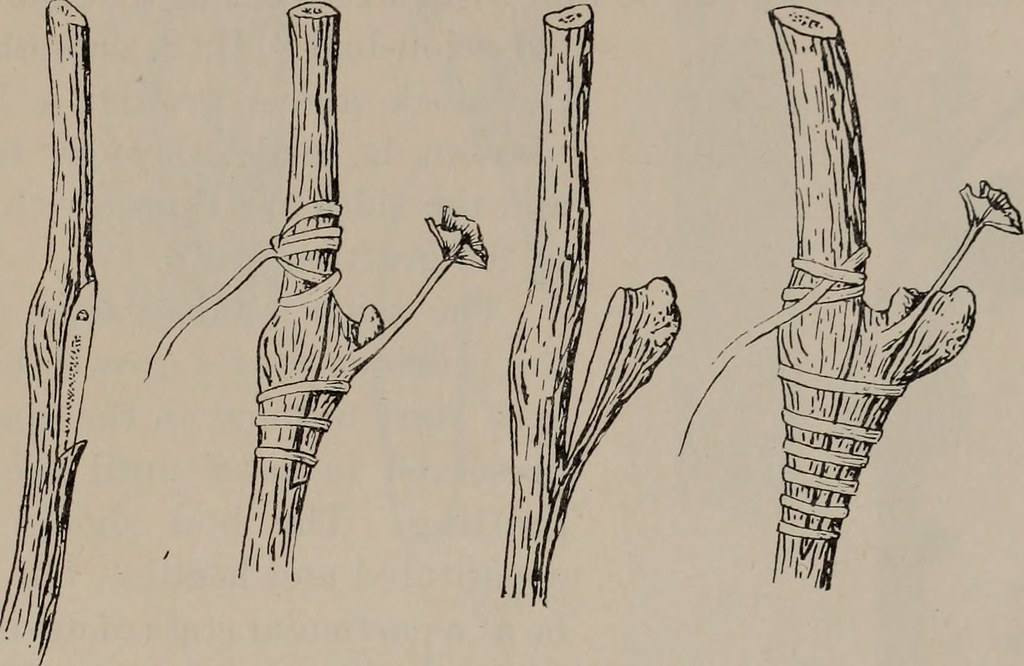Grafting: A Fascinating Technique for Plant Propagation
Hello, gardening enthusiasts! Today, we’re diving into a captivating topic: grafting! This technique, known as graftage, is an incredible horticultural practice where tissues from two plants are joined together, allowing them to grow as one. If you’ve ever wondered how some trees bear multiple types of fruit or how different plant characteristics can be combined into one, grafting is the answer. Let’s explore what grafting is, its benefits, and how it’s done.
What Is Grafting?
Grafting is a method of asexual propagation commonly used in horticulture and agriculture to combine the best characteristics of two plants into one. The plant that provides the roots is called the rootstock, while the plant that provides the stems, leaves, flowers, or fruits is known as the scion. The scion carries the desired traits that will be reproduced in future generations of the plant.
Real-World Scenarios
Imagine encountering a “miracle” tree that produces multiple types of apples or even a mix of different fruits like plums, peaches, and apples—all on the same stem. Or consider buying an orange tree with strong roots from one variety and delicious fruit from another. These seemingly magical combinations are made possible through grafting, a technique that farmers, botanists, and home gardeners have been using for generations.
Understanding the Grafting Process
To appreciate how grafting works, it’s essential to understand a few key parts of a plant. We’re all familiar with the bark, the outer layer of trees. Beneath the bark lies a more fascinating layer called the cambium. This undifferentiated tissue is like a blank slate, capable of turning into whatever the plant needs—bark, vascular tissue, branches, or even roots.
Grafting involves exposing this cambium layer and encouraging it to grow in a specific way. When the cambium layers of the scion and rootstock are aligned and pressed together, they start to form new vascular tissues that bind the two plants into one.
Grafting in Action: The Avocado Example
A common example of grafting is seen with avocado trees. If you’ve ever tried growing an avocado tree from a seed, you may have noticed that the resulting tree isn’t very strong. This happens because the best fruit-producing avocado trees often lack a robust support system. They focus their energy on producing tasty fruit, leaving little for developing strong roots or defenses against diseases.
Conversely, there’s a breed of avocado tree with strong roots and disease-resistant properties, but its fruit isn’t very tasty. Through grafting, the scion from the fruit-producing tree is combined with the rootstock of the stronger tree, resulting in a new tree with the best of both worlds—delicious fruit and a strong, resilient structure.
Grafting Methods
Grafting is surprisingly accessible, and there are several methods to choose from, depending on your goals:
- Approach Grafting: In this method, two fully formed plants are attached at their stems without cutting off any leaves or roots. A small section of bark is removed from each stem, exposing the cambium layers, which are then pressed together. The stems are tied to allow the tissues to heal and fuse, much like how a scab forms over a wound.
- T-Budding: This technique involves grafting a single bud rather than an entire branch. The bud is taken from the scion, along with a small piece of bark, and inserted into a cut on the rootstock’s stem. Once the graft heals, the rootstock’s stem above the graft is removed, allowing the bud to grow.
- Cleft Grafting: This is a common method, especially for fruit trees. It involves making a split in the rootstock, into which a sharpened, bark-stripped scion is inserted. The graft is then bound up until it heals. Multiple scions can be grafted onto a single rootstock using this method.
Factors for Successful Grafting
For grafting to be successful, several factors must be considered:
- Compatibility: The scion and rootstock must be compatible, typically from closely related species, to ensure the vascular tissues can join effectively.
- Cambium Alignment and Pressure: Proper alignment and firm pressure are crucial for the graft to heal quickly, allowing the transfer of nutrients and water from the rootstock to the scion.
- Care of the Graft Site: After grafting, it’s vital to protect the graft site from water loss and provide structural support as the plant heals. Grafting tapes, waxes, and sometimes twine are used for this purpose. Pruning may also be necessary to prevent the rootstock from producing shoots that could inhibit the scion’s growth.
Grafting Tools
To achieve successful grafting, you’ll need the right tools:
- Grafting Knives: A sharp, clean knife is essential to minimize tissue damage and prevent the spread of disease.
- Graft Seals: These help keep the graft site hydrated and protect it from drying out while allowing for plant growth.
- Tying and Support Materials: These ensure the graft stays in place as it heals.
- Grafting Machines: For larger-scale operations, grafting machines can automate the process, saving time and effort.
Conclusion
Grafting is a fascinating and practical technique that allows gardeners to combine the best traits of different plants, creating stronger, more resilient, and productive specimens. Whether you’re a hobbyist or a professional, understanding and practicing grafting can open up a world of possibilities in plant propagation.
That’s all for today’s blog! I hope you found this introduction to grafting informative and inspiring. Stay tuned for more gardening tips and techniques. Until next time, take care and happy gardening! 🌱










